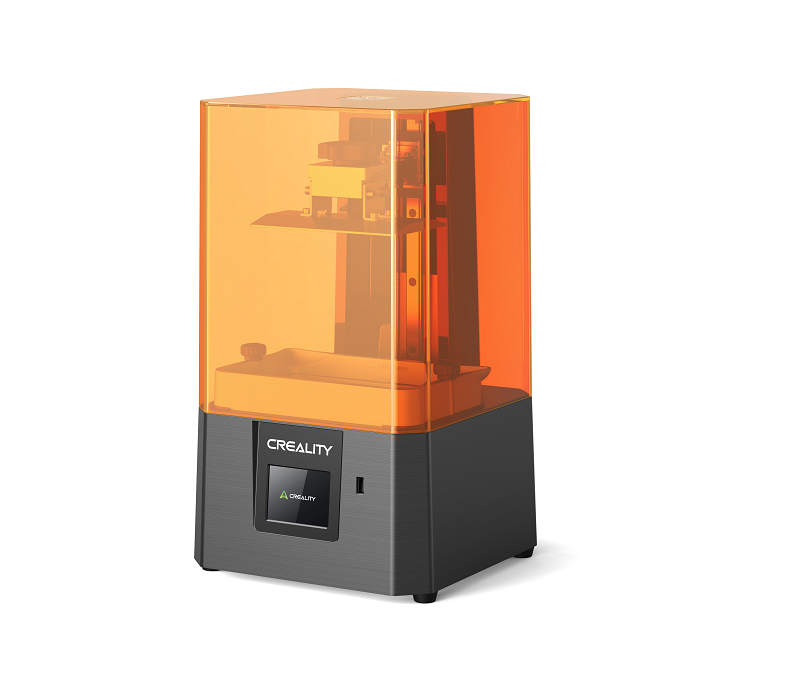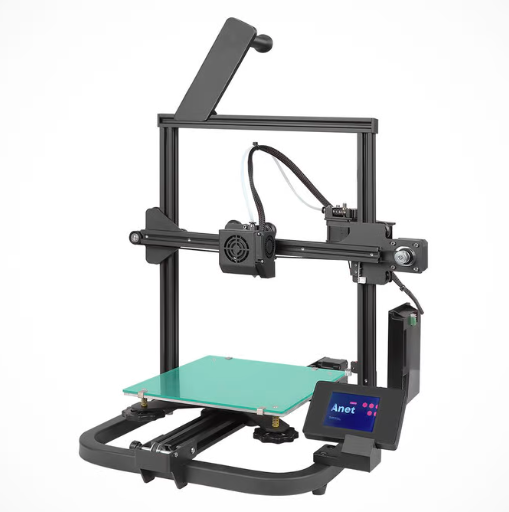Compare Halot R6 vs A8 V2
Comparison between the best 3D printers
Choose the best 3D printer at the best price. The cheapest 3D printers are here.
Buy a 3D printer here with 3D Fila.
 |
 |
|
| Model | Halot R6[BUY Halot R6] |
A8 V2 |
| Printing Material | Resin | Filament |
| Buy Resin for Creality Halot R6 | Buy Filament forAnet A8 V2 | |
| Estimated price | $129,00 | $129,00 |
| Manufacturer | Creality | Anet |
| Release Year | 2024 | 2021 |
| Print Volume [mm] | 130x82x160 | 220x220x250 |
| Printer Size [mm] | 235x230x395 | 428x441x486 |
| Weight [kg] | 5,8 | 6,2 |
| Power Loss Recovery | NO | NO |
| Maximum Resolution [mm] | 0,01 | 0,1 |
| Processor | ||
| Display | Touchscreen 2,8'' | Display touchscreen 2,8'' |
| Power Supply | 42W | 110/220V / 250W |
| Connectivity | USB drive, WiFi | SD / USB |
| Operating systems | Windows, Mac | Windows, Mac, Linux |
| Date of registration in the system | 2024-12-05 | 2022-11-10 |
| Release date | 2024 | 2021 |
| Extra features | The Creality Halot R6 offers high precision with a layer height of 0.01-0.2 mm, a printing speed of 60 mm/h, and an integral light source with over 90% uniformity. Compact and lightweight, it features a 6.08" monochrome LCD for faster curing and extended durability. Includes Wi-Fi connectivity via Creality Cloud, an intuitive touchscreen interface, and supports remote monitoring and timelapse recording with a USB camera. Ideal for beginners, its robust and user-friendly. | The Anet A8 V2 is a Cartesian-XZ type 3D printer with a build volume of 220 x 220 x 250 mm, Ender 3 design and V-slot assembly. It has a 32-bit motherboard and touchscreen interface, promising ease of use. It uses open source firmware and has thermal failure protection. It stands out for its cable organization and the absence of a heated bed, focusing on energy savings and PLA printing. It comes with an external power adapter, aiming at greater safety, especially for beginners and educational use. |
| Support for multiple colors and materials (AMS and CFS) | NO | NO |
Notes * |
||
| Cost-benefit | 9 / 10 | 6 / 10 |
| Hardware | 9 / 10 | 0.6 / 10 |
| Tela | . | . |
| Print volume | 3 / 10 | 3 / 10 |
| Performance | 9 / 10 | 1 / 10 |
| [BUY Halot R6] |
Conclusion |
| In comparing the Creality Halot R6 and the Anet A8 V2, both printers offer their unique advantages and target different user preferences in the 3D printing landscape. The Creality Halot R6, released in 2024, impresses with its high precision and advanced features. Its smaller print volume and compact design make it suitable for detailed print jobs, particularly for beginners who may prioritize ease of use and a user-friendly experience. The Halot R6's superior resolution (0.01 mm) and faster printing speed mean higher-quality outputs, while its modern features like Wi-Fi connectivity and remote monitoring significantly enhance the overall user experience. On the other hand, the Anet A8 V2, released in 2021, offers a larger print volume, making it suitable for larger projects. While it lacks the precision and advanced features of the Halot R6, it shines with its open-source approach, making it a favorite among hobbyists who enjoy customizing their printers. Its design emphasizes energy efficiency, targeting users who primarily print with PLA and prefer a straightforward printing experience, without some of the modern complexities seen in newer models. When considering cost-effectiveness, the Halot R6 excels with a higher score, signaling better performance per dollar spent, while the Anet A8 V2 lags behind. In conclusion, the choice between the two ultimately hinges on the user’s specific needs. The Creality Halot R6 is ideal for those seeking precision and ease of use in a compact form, while the Anet A8 V2 caters to users who value a larger build volume and customization potential, despite its limitations in features and performance. |

